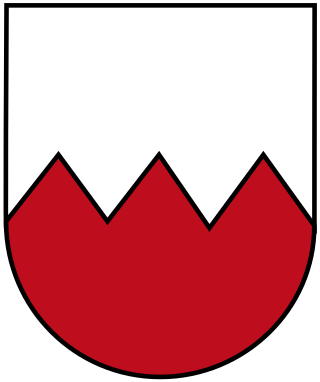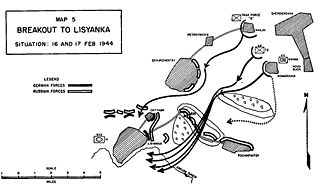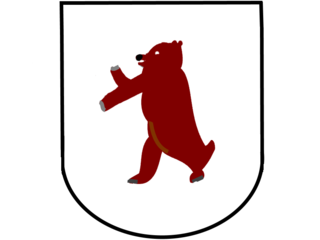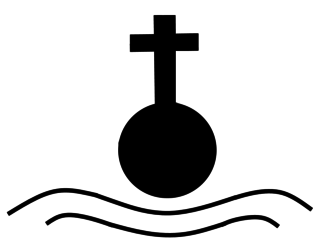
Army Group South was the name of one of three German Army Groups during World War II.

The German 73rd Infantry Division or in German 73. Infanterie-Division was a German military unit which served during World War II. The division consisted of more than 10,000 soldiers, primarily of the infantry branch, with supporting artillery. The division was only semi-motorized and relied on marching for the infantry units and horse-drawn transport for most of the support equipment, especially the artillery.

The 208th Infantry Division, or 208.Infanterie-Division in German, was a large military unit that served during World War II. Like most German infantry divisions, the bulk of its troops were foot-mobile infantry supported by horse-drawn artillery.

The 78th Infantry Division, later known as the 78th Assault Division, was a German infantry formation which fought during World War II. After the 78th Assault Division was destroyed near Minsk in July 1944, the 78th Volksgrenadier Division was created.

The 3rd Mountain Division was a formation of the German Wehrmacht during World War II. It was created from the Austrian Army's 5th and 7th Divisions following the Anschluss in 1938.
The 1st Ski Division was a mountain infantry unit of the German Waffen-SS/Army trained to use skis for movement during winter. It was created on the Eastern Front in the autumn of 1943 in preparation for upcoming winter operations. It was enlarged into a full division in the summer of 1944. The division fought exclusively on the Eastern Front as part of Army Group Centre, including an approach to the Vistula river and during the retreat into Slovakia, southern Poland and the Czech lands, where it surrendered to the Red Army in May 1945.

The German 20th Infantry Division was an infantry division of Nazi Germany.
The 4th Mountain Division was a mountain infantry division of the Heer, the army of the Wehrmacht of Nazi Germany during World War II. The division was active between October 1940 and May 1940 and participated in the Balkans campaign as well as on the Eastern Front.

The German Seventeenth Army was a field army of Nazi Germany during World War II.
The 19th Panzer Division was an armoured division in the German Army, the Wehrmacht, during World War II. It was created from the 19th Infantry Division.

The 72nd Infantry Division was formed on 19 September 1939 in Trier from Grenz-Division Trier, a border security unit.
Army Group C was an army group of the German Wehrmacht during World War II. In its first deployment between 1939 and 1941, its main assignment was the defense of the Franco-German border during the Phony War and the Western Campaign, after which it was moved to East Prussia to become Army Group North. When Army Group C was deployed a second time from 1943 to 1945, it was used to coordinate German forces on the Italian front.

The 68th Infantry Division was a formation of the German army during World War II. It was formed in 1939 and was initially committed to the German invasion of Poland. It took part in the Battle of France in 1940, and then Operation Barbarossa in 1941 as part of Army Group South. The 68th remained in southern Russia until refitted in Poland in early 1944. Returned to action the 68th fought for rest of the war in the East, in Russia, Slovakia, in the defence of Germany until finally surrendering to the Soviets in Czechoslovakia.

Army Group H was a German army group during World War II, active between November 1944 and May 1945. It was deployed mainly in the German-occupied Netherlands. The staff was known as Supreme Commander North West from 7 April. The army group surrendered at Lüneburg Heath on 4 May 1945.

The 214th Infantry Division was a German division in World War II. It was formed on 26 August 1939.

The 75th Infantry Division was a German infantry division in World War II. It was formed on 26 August 1939.

The 337th Volksgrenadier Division was a German military unit formed during World War II.
The 544th Volksgrenadier Division was a Volksgrenadier-type infantry division of the German Wehrmacht during World War II. It was active from July 1944 to May 1945. In the first two months of service, the division was designated 544th Grenadier Division.
Operation Lehrgang was the evacuation of German and Italian forces from Sicily during World War II. Undertaken in mid-August 1943, Lehrgang evacuated just over 100,000 soldiers from Sicily, which had been the target of an Allied amphibious invasion since July.

The Infantry Division Courland was an infantry division of the German army during World War II.














